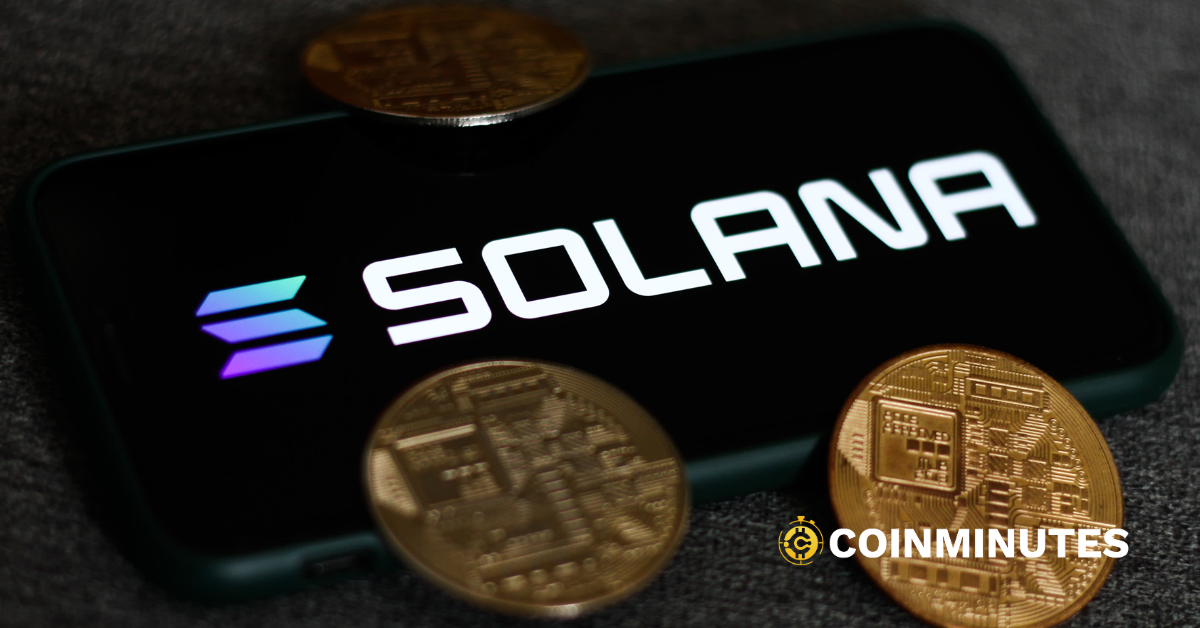Cryptocurrencies have revolutionized financial services by eliminating intermediaries through peer-to-peer transactions. However, leading cryptocurrencies such as Bitcoin and Ethereum face limitations when it comes to scalability. The Solana blockchain presents a viable solution to this challenge. To learn more about Solana, join CoinMinutes and read the article below.
What Is Solana Blockchain?
Similar to Ethereum and Cardano, Solana is a blockchain-based cryptocurrency project that uses the technology of Smart Contracts. With its Consensus Algorithm and Proof-of-history (PoH), the Solana project is groundbreaking with its promise of fast and inexpensive transactions.
Solana is a monoblock blockchain platform known for its speed and performance. This is the world’s first web-scale blockchain. The SOL token is the native cryptocurrency of the platform and is used to pay transaction fees. Since its launch in 2017, Solana has grown to become one of the largest cryptocurrencies in the world.
Because the Solana blockchain has smart contract capabilities, developers can use it to build decentralized applications (dApps). Solana’s strong growth has helped establish it as a rival to other major programmable blockchains, including Ethereum and Cardano. Solana was created to solve current blockchain limitations such as scalability and very high transaction costs.
What Makes Solana Blockchain Unique?
Solana stands out in the crowded blockchain space for its high-performance features. Its unique approach to consensus and scalability sets it apart. Solana uses a Proof-of-history combined with a Proof-of-stake (PoS) consensus mechanism. PoH helps in timestamping transactions before they are added to a block, improving the overall efficiency of the network.
Additionally, Solana’s architecture is designed to scale horizontally, meaning it can handle a growing number of transactions by adding more nodes to the network. This scalability is achieved through features like the Tower BFT (Byzantine Fault Tolerance) consensus mechanism and a unique data structure called the Replicator.
The combination of these elements allows Solana to achieve high throughput and low transaction costs, making it an attractive option for decentralized applications and projects requiring fast and cost-effective transactions.
How Does Solana Blockchain Work?
Solana achieves scaling by using the PoS consensus algorithm and combining it with PoH. This is done through a series of computations that confirm that an event has occurred on the network at any given time and is represented as a cryptographic clock, providing a timestamp for all users. online transactions.
Proof of History (PoH) is used to verify the flow of time and the order between events. The Proof of History algorithm will be used to confirm and validate the blocks generated by the PoH generator as shown below:

Pros and Cons of Solana
Pros:
- Solana is considered one of the fastest blockchains currently with the ability to perform more than 50,000 transactions per second at an extremely low cost (less than $.01)
- As mentioned above, with the outstanding feature of taking advantage of Proof of History (PoH), Solana achieves a high level of scalability and can take advantage of this for many other breakthrough innovations.
- Solana has an extremely large user community of billions of users on board, which has created a stable economy of scale and kept subscription fees very low.
- With its special capabilities, Solana can combine projects effectively, supporting users to optimize segments or level 2 systems.
Cons
- With the current version, some implementations are still very limited, you have to wait for the beta version of Solona to launch.
- The hardware configuration needed to set up Solana is relatively expensive
- Some criticism has been aimed at Solana for not being decentralized enough
Solana (SOL) Token
SOL, short for Solana, is the native utility token of the Solana blockchain. SOL made its debut in March 2020 and has aimed to secure a position among the top 10 cryptocurrencies based on overall market capitalization.
SOL plays a crucial role within the Solana ecosystem, serving various functions such as transaction fees, staking, and participating in network governance. It’s the fuel that powers the Solana blockchain, facilitating fast and cost-effective transactions.
Solana vs. Ethereum
Both Solana and Ethereum are blockchain platforms, but they have some key differences. Ethereum is one of the earliest and most well-known blockchain platforms, known for its smart contract functionality. Solana is a newer entrant that aims to address some of the scalability issues faced by Ethereum.
Ethereum uses a consensus mechanism called Proof of Stake, which is energy-intensive and can lead to high transaction fees during times of network congestion. Solana, on another hand, uses a unique Proof of History combined with a Proof of Stake mechanism, claiming to offer faster transaction speeds and lower fees.
While Ethereum has a larger developer community and a longer track record, Solana’s focus on scalability and performance has gained attention. It’s worth noting that the blockchain space is dynamic, and the competition and development in both platforms continue to evolve.
Conclusion
Above is information about the Solana blockchain and SOL token. Hopefully, through the article, readers will understand what Solana is and what potential it has in the future. With many competitive advantages, Solana is currently the blockchain receiving a lot of attention from cryptocurrency investors.






